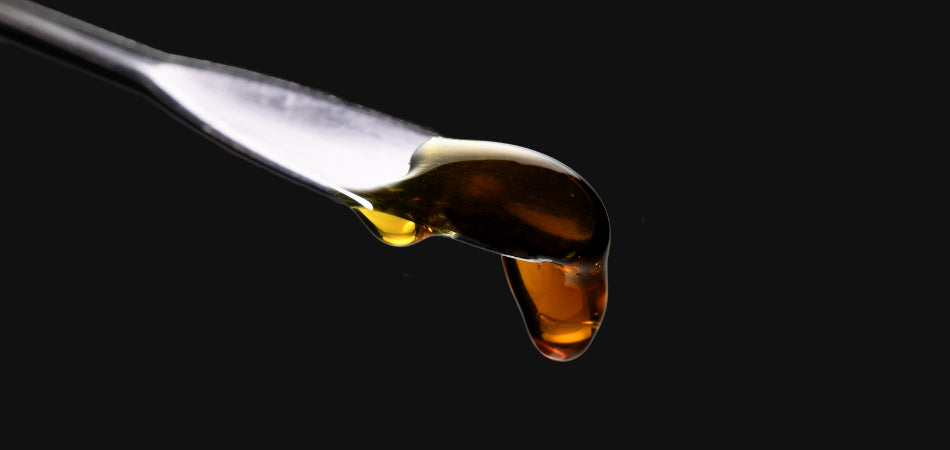How to Winterize BHO for Clearer Concentrates

Winterizing BHO (butane hash oil) is a necessary step after the initial cannabis extraction stage and before purging the concentrate in a vacuum oven to remove the residual solvents. The winterization process removes the plant waxes, fats, lipids, and chlorophyll from the "crude" cannabis extract to leave a clear, solvent-free concentrate that is safer to vape and won't burn or turn cloudy over time. Winterization is an essential step when making BHO products such as RSO or distillate.
Winterization utilizes alcohol (typically ethanol) as a secondary solvent to separate the undesirable substances from the cannabis oil. Learning how to winterize BHO correctly will help you produce higher-quality concentrates.
Step 1: Gather Your Materials
You will need:
- Ethanol (preferably 190 proof)
- Cannabis concentrate
- Glass containers such as mason jars or Pyrex dishes
- Freezer
- Unbleached coffee filters or fine filtration paper
- Funnel
- A filtration setup
Step 2: Mix the Crude Extract with Ethanol
Safety precaution: Ensure you are working in a well-ventilated area and follow proper safety protocols when handling ethanol and other solvents.
- Place a non-denatured ethanol product (190 proof preferred) such as Everclear in a mason jar. You'll need a 10mL:1g ratio of ethanol to cannabis extract.
- Gently heat the ethanol to 86-140°F with a hot water bath. Don't bring the alcohol near an open flame, as the alcohol and residual butane are flammable substances.
- Pour the "crude" cannabis extract into the mason jar and mix it with the alcohol until the extract has dissolved completely (the mixture is 100% clear) and the mixture has stopped bubbling (this is the butane gas rising to the top and evaporating off). It is critical to continue stirring the mixture over low heat until the bubbling has completely stopped before sealing the jar.
Step 3: Freeze the Mixture
- Seal the mason jar and place it in a freezer at -4°F/-20°C (or colder) for 24-48 hours. You can also use a chiller, walk-in freezer, chest freezer, or dry ice to complete this step. The freezing process will cause the fats, lipids, and waxes to precipitate out of the solution. The colder the temperature, the faster the waxes, fats, and lipids will rise to the top of the mixture and solidify.
- Freeze a second empty mason jar or Pyrex dish for filtering the mixture in the next step.
Step 4: Filter the Mixture
Now that the undesirable compounds have risen to the top of the jar and solidified, it's time to separate them from the cannabis oil/ethanol mixture.
- Prepare your filtration setup with coffee filters or fine filtration paper placed in a funnel over a clean glass container like a mason jar or Pyrex dish.
- Keeping the two jars inside the freezer, carefully pour the mixture through the coffee filter on top of the second jar or Pyrex dish. The solidified fats, lipids, and waxes will be caught in the coffee filter while the winterized solution will pass through into the jar or dish. If the solution still appears cloudy after the first filtration, you may need to repeat the freezing and filtration steps until it becomes clear.
Step 5: Purge the Cannabis Oil
The ethanol now needs to be purged from the cannabis oil to leave a solvent-free concentrate. There are three main ways to do this:
- Heat the filtered cannabis oil/ethanol mixture in a warm water bath in a well-ventilated area. This will make the alcohol evaporate, leaving pure cannabis oil. Ethanol has a boiling point of 173°F, so using this method to remove the ethanol from the winterized oil will destroy more terpenes than using methods that use pressure to lower the temperature at which ethanol turns into a gas. When using heat to evaporate the ethanol, keep the temperature below the boiling point of cannabinoids (typically around 70-80°C or 158-176°F) to preserve their integrity.
- Use a rotary evaporator. This machine removes the ethanol via distillation and captures it for reuse. Rotavaps use vacuum pressure and rotation to remove ethanol at much lower temperatures. This helps to preserve more terpenes. However, you may need further processing with a vacuum oven to achieve 0 ppm solvent-free test results.
- Purge the mixture in a vacuum oven. The mixture will "cold boil" in the vacuum oven(thanks to negative pressure from the vacuum pump) and the ethanol will evaporate off. You can use a cold trap to collect the evaporated ethanol for reuse. However, adding the solution to the vacuum oven with too much ethanol will overload the cold trap and contaminate and cause damage to your pump. The use of a rotary evaporator or other means of distillation/evaporation is preferred before adding the oil to the vacuum oven.
After the vacuum purge is complete, you are ready to test, gram out, and package your BHO. It will need to be decarboxylated first for some applications. A concentrate dispenser can be used to meter out your concentrate using a pre-measured dose. This ensures your concentrates are weighed out accurately and consistently and makes the packaging process significantly more efficient.
How Does Winterization Work?
"Crude" cannabis oil, butane, propane, and CO2 are all “nonpolar.” This means that their molecules are made up of atoms with the same electronegativity. Ethanol is a polar solvent, meaning that its molecules are made up of atoms with a difference in electronegativity.
Dissolving the crude cannabis oil into the ethanol leads to a chemical reaction that causes the active compounds in the cannabis oil to separate from the non-active compounds at sub-zero temperatures.
This is similar to the process that occurs when you refrigerate a pan of slow-roasted meat. The fats rise to the top and solidify with the cold temperatures. You can then separate them from the meat.
Process BHO Efficiently with the Right Equipment
Butane hash oil is a lucrative and versatile kind of cannabis concentrate to make. The winterization process is an important step following BHO extraction because it ensures a clearer product with greater shelf appeal and less likelihood of burning in vaping devices. Winterized oil is also great for RSO and distillate.
After winterization and purging in a vacuum oven, a concentrate dispenser helps to ensure consistent dosing and speeds up the packaging process. This makes your BHO workflow more efficient and ensures the most consistent results.



